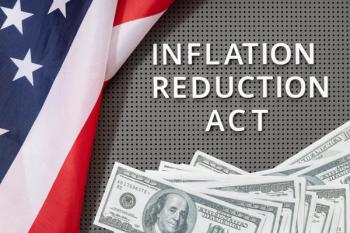
Some Hospitals Charge Commercial Insurers Much More Than Medicare
A new study found that commercial insurers pay hospitals more than twice what Medicare does, with prices varying depending on local market factors such as hospital concentration and insurer competition.
Commercial insurers pay hospitals much more than Medicare in some areas than others, and a new study found that local market factors, including hospital dominance, help explain these growing price gaps.
These findings, published in JAMA Health Forum, could
From 2000 to 2020, medical care prices in the U.S. rose nearly twice as fast as prices for other goods and services—growing at an average of 4.9% per year, compared to 2.5%. Hospital services saw even steeper increases, averaging 10.2% annually.
While price growth slowed during the COVID-19 pandemic, the study showed that federal projections expect it will return to previous levels and continue outpacing the rest of the economy through 2032.
Another analysis from KFF and the Peterson Center on Healthcare
Many experts now see rising commercial insurance prices, especially those not tied to better care quality, as a major force behind high U.S. health spending, according to study authors.
Hospital mergers and physician practice consolidation have reduced competition in many areas, allowing dominant systems to demand higher prices.
However, markets where insurers hold more negotiating power tend to have lower prices.
To better understand these patterns, researchers used FAIR Health’s large, geographically diverse database of private insurance claims to compare commercial and Medicare payment rates across 491 local areas (“geozips”) in the U.S. They analyzed inpatient, outpatient, and professional services in 2020 and again from mid-2022 to mid-2023. By calculating the ratio of commercial-to-Medicare prices for each procedure and averaging them using spending weights, they created local and state-level comparisons.
They also examined market characteristics—such as hospital and insurer market concentration with the Herfindahl-Hirschman Index, the presence of teaching hospitals, average income and local insurance coverage—to determine which factors were linked to higher prices.
Between 2020 and 2023, commercial payments for hospital services rose relative to Medicare, while payments for professional services declined slightly. On average, commercial insurers paid 246% of Medicare’s hospital rates in 2022–2023, up from 234% in 2020. Most of this increase came from higher outpatient costs, which accounted for 29% of hospital spending in 2022–2023—up from 23%.
On the other hand, professional service payments dropped from 127% to 124% of Medicare rates. Prices varied widely by state: for professional services, Alaska had the highest commercial-to-Medicare ratio at 2.09, while Alabama had the lowest at 0.91. For hospital services, Vermont topped the list at 6.90, and Arkansas was lowest at 1.28.
Local market factors strongly influenced these price gaps. Areas with high hospital concentration, greater household income, and major teaching hospitals had higher commercial-to-Medicare price ratios. Regions with more uninsured residents also tended to have higher prices. However, areas with fewer competing insurers—where insurers held more market power—had lower commercial hospital prices.
These findings align with past research, including RAND and Congressional Budget Office studies, which also show that commercial prices often far exceed Medicare’s, especially for outpatient and professional services.
A key strength of this study is its substate-level analysis, which allowed researchers to directly link pricing to local market characteristics.
Markets with very high hospital concentration—typically in rural environments or less urban—had significantly higher price ratios while areas with stronger insurer competition saw lower prices. Teaching hospitals in urban areas also had higher prices, possibly due to their focus on rare or complex conditions and advanced medical technologies.
Policy options to address these gaps include stronger requirements to stop hospital mergers, reforms to limit hospital consolidation and site-neutral payment policies that prevent hospitals from charging more for the same services provided in less costly settings.
While broad reforms such as a public option could drive larger savings, authors warned that changes must be carefully designed to avoid reducing care quality or access.
The study does include limitations.
The claims database, while large and diverse, does not include every private insurer or region. Some price variations by service type or unmeasured factors—including patient risk or competition in non-hospital provider markets—could also influence results.
However, the findings create a map for identifying areas most manageable to targeted pricing reforms.
Newsletter
Get the latest industry news, event updates, and more from Managed healthcare Executive.






















































